|
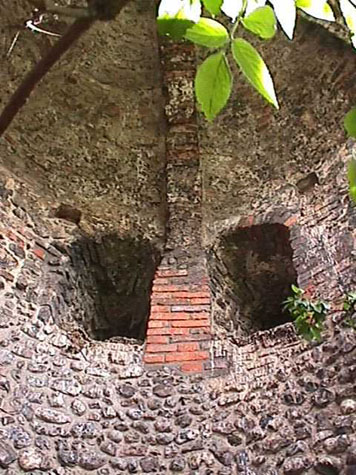 [1] The vaulting of the tower and the blocked openings of the upper
chamber on the north-east side.
[1] The vaulting of the tower and the blocked openings of the upper
chamber on the north-east side.
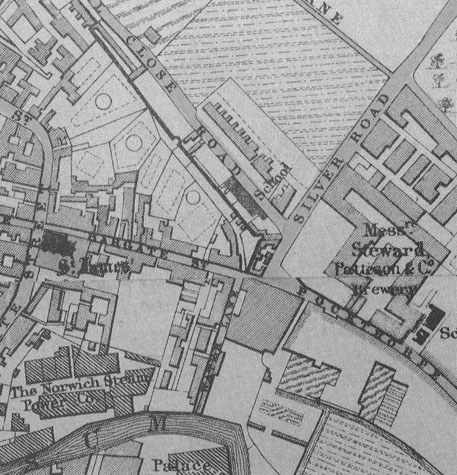 [2] Detail of the map of Norwich by A Morant published in 1873.
[2] Detail of the map of Norwich by A Morant published in 1873.
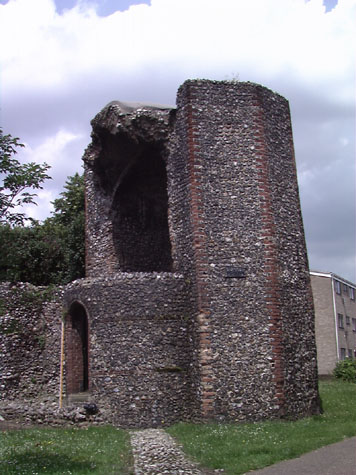 [3] The tower from the south east.
[3] The tower from the south east.
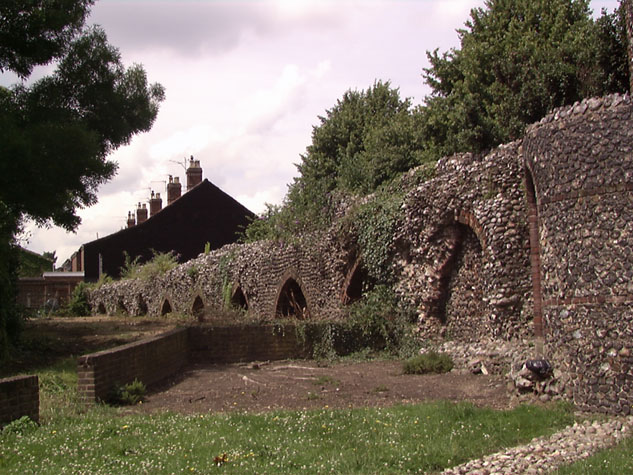 [4] The inner face of the wall from the south east with the surviving arches.
[4] The inner face of the wall from the south east with the surviving arches.
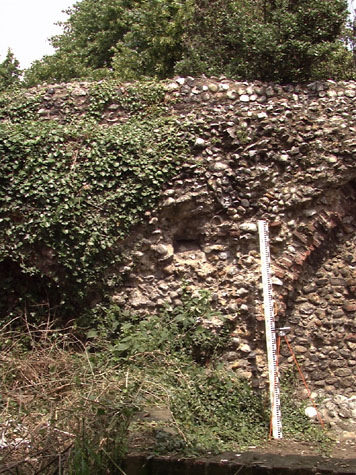 [5] Detail of the arch and the pier immediately west of the tower.
[5] Detail of the arch and the pier immediately west of the tower.
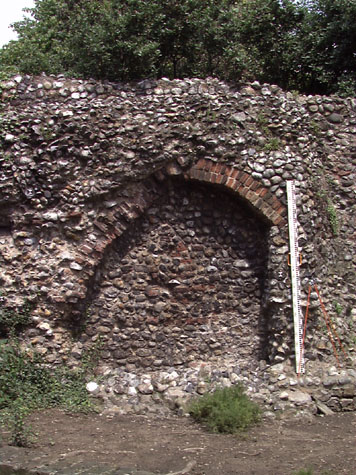 [6] The arch immediately west of the tower showing the earlier brick
work on the left side and the repair on the right.
[6] The arch immediately west of the tower showing the earlier brick
work on the left side and the repair on the right.
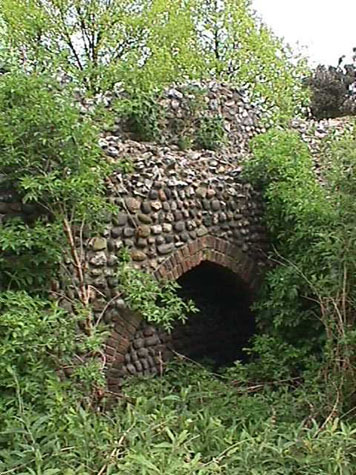
[7] South or inner side of the wall showing a large area of repair with cobbles.
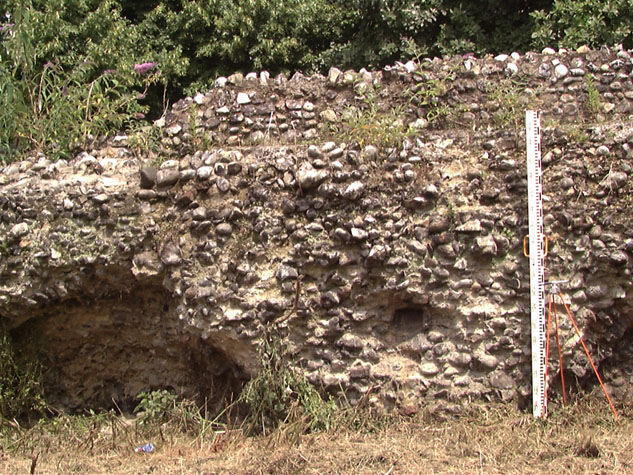 [8] Detail of the eroded face of the wall
on the inner or south side that shows clearly the wall walk and the
remains of the outer parapet.
[8] Detail of the eroded face of the wall
on the inner or south side that shows clearly the wall walk and the
remains of the outer parapet.
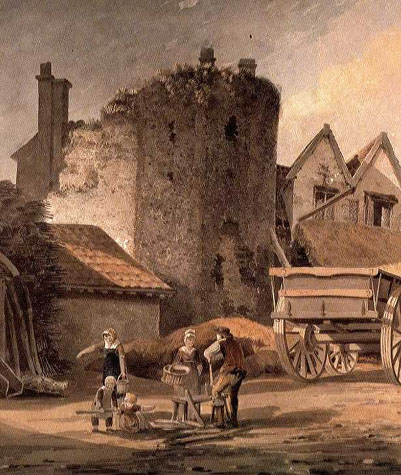 [9] View of the tower from the north east in 1809 by Robert Dixon
[Norwich Castle Museum and Art Gallery]
[9] View of the tower from the north east in 1809 by Robert Dixon
[Norwich Castle Museum and Art Gallery]
|
Introduction
The tower at the junction of
Bull Close Road and Silver Road, is 16 metres north of the modern line of
Barrack Street and about 130 metres north of the river. The flint tower is
polygonal on the outer or north and east sides and has bricks laid as quoins at
each of the angles to reinforce the flint work. It now stands to a height
of just under 8 metres and had chambers on two floors with narrow slits or
windows on both levels looking out to the north and the east. These
original openings had deep reveals and inner arches of brick headers but they
are all now blocked with flints, some completely and some on the outer face.
Documentary evidence suggests that the tower was built in the 1320s.
Evidence in the flint work
inside the tower indicates that the lower chamber was vaulted. Although
this vault and the floor of the first-floor chamber has gone and the inner or
south side of the tower has collapsed, at the upper level most of the original
quadripartite vault with brick ribs survives. [1] There is no evidence in
the surviving structure to show certainly the position and form of the entrance
into the tower or the arrangement of the staircase for access to either the
upper chamber or the roof level behind the parapet. However, the other
surviving towers, apart from those on Carrow Hill, were entered at the centre of
the inner side and an apron of flint at the south-west corner of the Bull Close
tower suggests that there could have been a stair turret here.
The tower was at the north-east
corner of the City defences and was immediately north of Pockthorpe Gate.
[2] The wall to the south of the tower, between the tower and the gate, has not
survived but its line has been marked in modern cobbles on both sides of Barrack
Street. [3] A 19th-century engraving of the gate, based on an 18th-century
sketch, shows that at that stage there was no arcade on the inner side of the
wall between the gate and the tower. The wall to the west of the tower
survives to the level of its wall walk and is almost 45 metres long and between
1.3 and 2.6 metres high. The present ground level on both sides of the
wall is much higher than in the Middle Ages. On the south side of the
wall, towards the city, there are the remains of the upper parts of ten brick
arches that supported the wall walk. [4] The arch closest to the tower
retains early brick, [5 & 6] The next five arches have been restored with
modern brick and have cobbles at the back to strengthen the flint work and the
four arches at the west end have lost most of their brickwork and have collapsed
or broken away. [7 & 8] Along the whole length of the wall, the level
of the walk is quite clear although little of its narrow outer parapet survives.
Flints in the face of the tower
are generally knapped and laid in courses. The flint work of the wall is
of poorer quality and has been repaired and re-pointed on the north side, and in
one area has been replaced with brickwork. Presumably many of these
repairs date from the 18th and 19th-centuries when buildings against the north
side of the wall were altered or demolished.
A view of the walls painted by
Robert Dixon, dated 1809 and now in the collection at the Norwich Castle Museum,
depicts this tower. [9]
|
